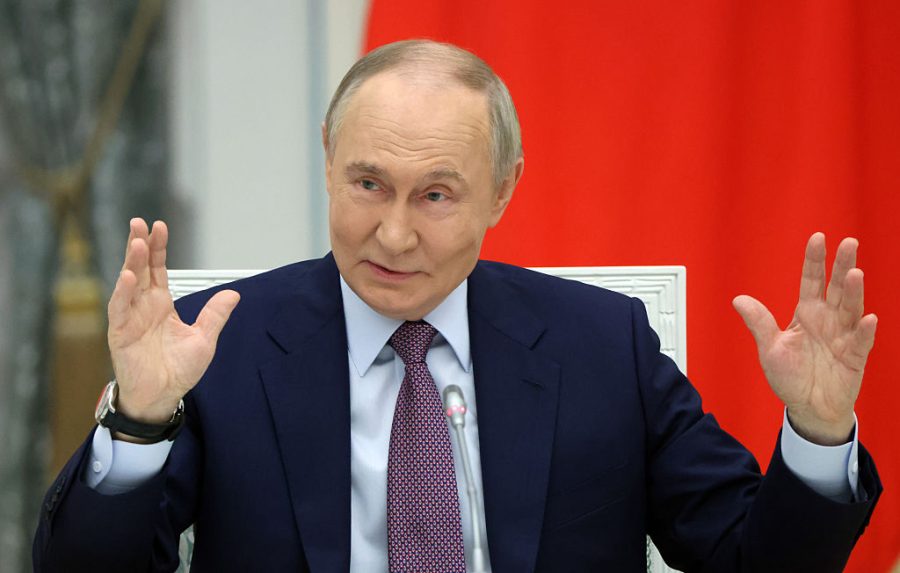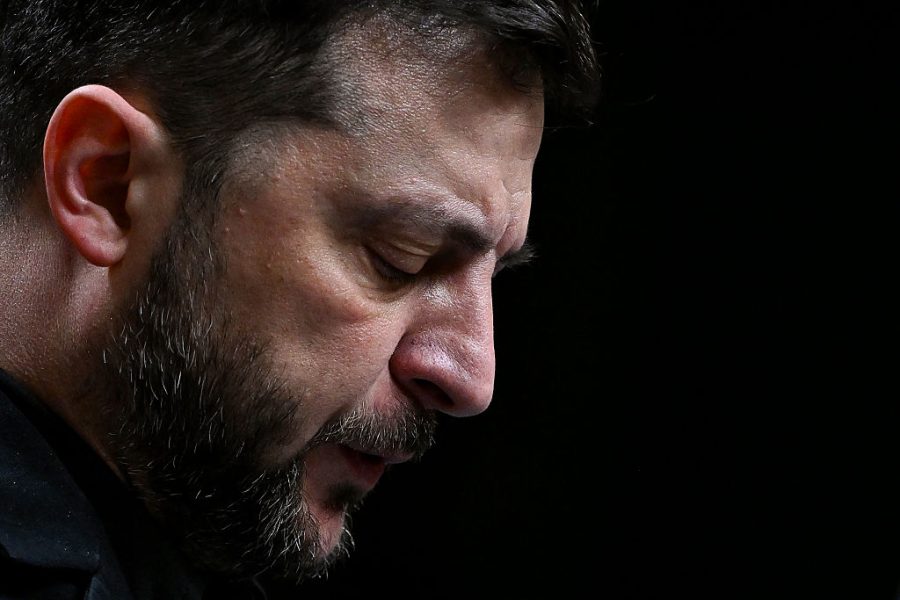I don’t think it’s accurate or helpful to think of Vladimir Putin as some Bond villain figure – but he certainly does make it harder to hold this line sometimes. In particular, his enthusiasm for ‘wonder weapons’ – often of questionable strategic value – does suggest a certain grandiose vanity. Some have genuine military utility, but others seem more useful in psychological than actual warfare.
Last week, the Russians announced a successful test of the 9M730 Burevestnik (‘Storm Petrel’), a nuclear-armed and -powered cruise missile. Its reactor allows it to travel further than any regular cruise missile, manoeuvring at altitudes as low as 50 metres. This would mean that it cannot be intercepted by anti-ballistic missile systems, including Donald Trump’s vaunted ‘Golden Dome’ (arguably another exercise in grandiose vanity), geared as they are to shooting down warheads coming in from high altitude. On the other hand, it is relatively slow and thus vulnerable to regular anti-aircraft systems and even fighters. Although it is unclear if, as some assumed, it spews a plume of radioactive exhaust behind it, the assumption is that it ought not to be impossible to track. So what is it for?
Putin’s nuclear sabre-rattling is meant to be a reminder for Trump
A similar question could be asked about the 2M39 Poseidon, which Putin yesterday announced had also been successfully tested. Poseidon is a massive, nuclear-powered underwater drone that can be fired from a suitably equipped submarine like a torpedo and then stealthily make its way to its target. It could be armed with a nuclear warhead, which could blast a whole carrier battle group or detonate near a coastal city.
Both are most likely to be second-strike weapons, there to retaliate in case of a nuclear attack on Russia or, better yet, deter one. Do they do the job so much better than other systems, though? As is, Russia has the largest nuclear arsenal in the world. According to the latest assessment from the Bulletin of the Atomic Scientists, it has 1,718 strategic warheads deployed: some 870 on 333 land-based ballistic missiles, 640 on submarine-launched ballistic missiles, and at least 200 at heavy bomber bases. The odds of a successful first strike able to destroy all or even most of these assets seem far-fetched.
Given that Poseidon and Burevestnik both challenge existing arms control agreements and understandings, why, at a time when not only is Moscow fighting a war in Ukraine but the strategic modernisation of its existing nuclear forces is running behind schedule, spend resources on these exotic weapons?
One answer might be that it fears those existing forces may be rendered obsolete by new generations of anti-missile systems. In the 1980s, the Soviets believed the hype around Ronald Reagan’s Strategic Defence Initiative – inevitably nicknamed ‘Star Wars’ – which was meant to provide just such a missile shield with lasers, orbiting homing ‘brilliant pebbles’ and similar exciting systems. It proved unworkable but helped encourage the Politburo to continue spending their system into collapse, as they feared that a United States able to counter Soviet second-strike capability could threaten or initiate an attack with impunity.
That was a fantasy, though, and so too is Trump’s Golden Dome. There seems little serious belief in Moscow today that Russia is about to become vulnerable. So what else is behind it?
In personalistic autocracies, the passions and concerns of the monarch are paramount. In 2018, Putin announced with evident satisfaction six new weapon systems, presenting them as a response to American rearmament. Two – the 3M22 Zircon hypersonic cruise missile and the Kh-47M2 Kinzhal hypersonic ballistic missile – have been used in Ukraine. The RS-28 Sarmat heavy ballistic missile is still going through a rather bumpy development process. The Avangard hypersonic glide vehicle, essentially a final-stage warhead, is reportedly in service. And then there are Burevestnik and Poseidon.
His presentation was noteworthy for a video showing nuclear warheads raining down on what looked suspiciously like Trump’s spiritual home, Florida. Putin was not just outlining Russian strategic rearmament. He was making a threat about what could happen if, as he framed it, the West continued to arm and challenge Russia: ‘No one listened to us then. So listen to us now.’ Since then, the more toxic Russian propagandists have also had fun with these weapons. In 2022, TV host Dmitri Kiselev warned Britain off supporting Ukraine, claiming (contrary to the actual science) that a single Poseidon could drown the UK under a 500-metre tidal wave of radioactive seawater.
Although the actual timing of these tests was probably dictated more by the projects’ progress, the decision to hype these apocalyptic devices reflects the current political environment. With Trump still havering over Ukraine – his recent sanctions have not, after all, been backed with any aid – Putin continues to try and deploy carrot and stick. His economic emissary, Kirill Dmitriev, has just returned from an essentially unsuccessful visit to America in which he again tried to talk up prospects for business cooperation. Now, the nuclear sabre-rattling is meant to remind Trump that ultimately Moscow has more and higher-value cards than Kyiv.
These systems may have little real value. They may be expensive and risky (a presumed test of Burevestnik in 2019 seems to have gone wrong, killing five scientists). But they are eye-catching and headline-grabbing (witness this very article). Indeed, they already seem to have provoked Trump into a knee-jerk resumption of nuclear testing. And Putin does seem to enjoy cosplaying Dr Evil from time to time.








Comments